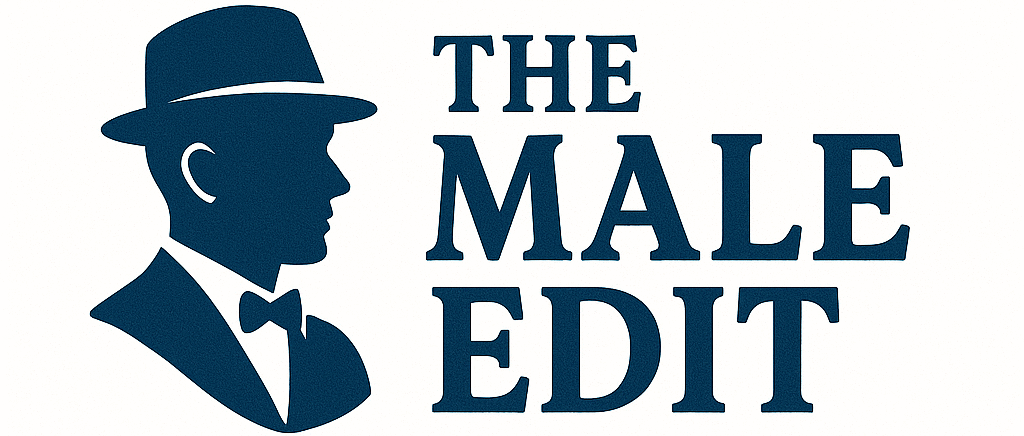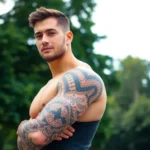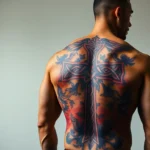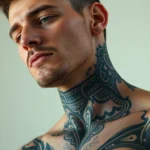Every man’s wardrobe needs that perfect pair of formal pants that transforms his entire look from ordinary to extraordinary. We’ve all experienced that moment when the right trousers make us feel confident and ready to conquer any boardroom meeting or special occasion.
Formal pants aren’t just clothing – they’re your secret weapon for making powerful first impressions. Whether you’re climbing the corporate ladder or attending a wedding, the style details matter more than you might think. From classic flat-front designs to modern tapered cuts, today’s formal pants offer endless possibilities to express your personal style while maintaining that professional edge.
We’re here to guide you through the essential elements that separate average formal wear from show-stopping style statements. The right fit, fabric choice, and styling techniques can elevate your entire wardrobe and boost your confidence in any formal setting.
Understanding the Foundation of Formal Pants for Men Style
Building upon the importance of formal pants in your wardrobe, we need to examine the core elements that separate exceptional formal wear from ordinary options. Mastering these fundamentals will transform how you approach selecting and styling formal pants.
Classic Fit vs Modern Fit Options
Classic fit formal pants offer a relaxed silhouette through the seat and thigh areas, providing comfort for men who prefer traditional styling. These pants typically feature a fuller cut that accommodates various body types while maintaining a professional appearance in conservative business environments.
Modern fit options present a slimmer profile that follows the body’s natural lines without being restrictive. We find these styles particularly effective for younger professionals and those seeking a contemporary look that bridges formal and casual settings.
Tapered leg openings distinguish modern fits from their classic counterparts, creating a streamlined appearance that works well with both dress shoes and more casual footwear. Classic fits maintain consistent width from thigh to hem, offering timeless appeal that never goes out of style.
Body proportions play a crucial role in determining which fit works best for your frame. Men with athletic builds often prefer modern fits to showcase their physique, while those with fuller figures may find classic fits more flattering and comfortable.
Fabric Quality and Material Selection
Wool remains the gold standard for formal pants, offering durability, breathability, and natural wrinkle resistance that synthetic alternatives struggle to match. We recommend investing in 100% wool or wool blends that contain at least 70% wool content for optimal performance and longevity.
Cotton formal pants provide excellent comfort for warmer climates and casual formal settings like summer weddings or outdoor business events. High quality cotton fabrics like twill or gabardine offer structure while maintaining breathability throughout long wearing periods.
Fabric weight significantly impacts both appearance and functionality of formal pants. Lightweight fabrics (7-9 oz) work best for spring and summer wear, while medium weight options (10-13 oz) provide year round versatility for most business situations.
Thread count and weave density determine how well formal pants hold their shape over time. Superior fabrics feature tight weaves that resist stretching and maintain crisp lines even after multiple wearings and dry cleaning cycles.
Color Coordination Fundamentals
Navy blue formal pants serve as the most versatile foundation piece, pairing seamlessly with white, light blue, and patterned dress shirts while complementing both black and brown leather accessories. This color choice works across seasons and formal occasions from business meetings to evening events.
Charcoal gray options provide sophisticated alternatives that work particularly well in professional settings where black might appear too formal. We find charcoal pants especially effective when paired with lighter colored shirts and ties for creating visual contrast.
Black formal pants require careful consideration since they’re traditionally reserved for evening wear and formal events like black tie occasions. Pairing black pants with inappropriate shirt colors or casual accessories can create style mismatches that undermine your overall appearance.
Color temperature matching ensures your formal pants complement your existing wardrobe pieces effectively. Cool toned pants like navy and charcoal work best with silver accessories and cool colored shirts, while warm toned options pair better with gold accents and earth tone shirts.
Mastering the Art of Proper Fit and Tailoring
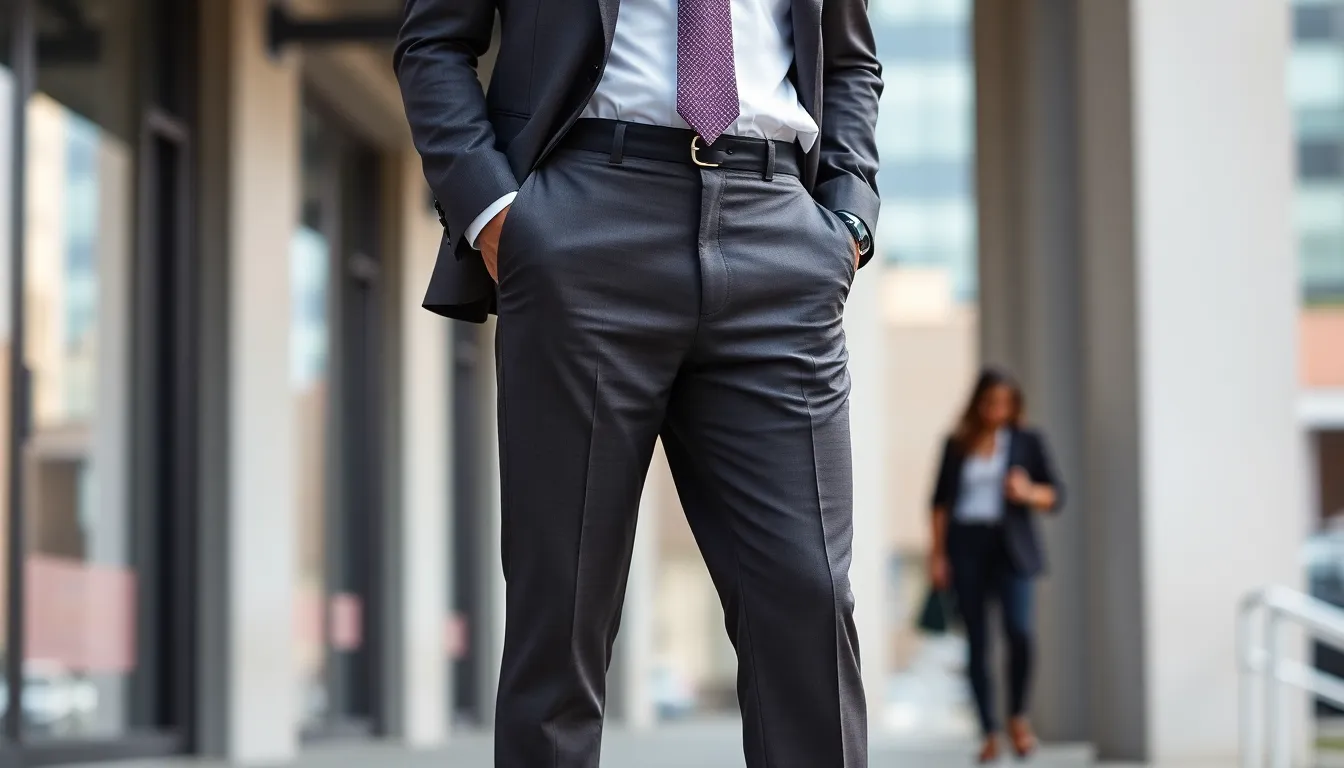
Understanding the technical aspects of formal pants fit transforms your entire appearance and comfort level throughout the day.
Waist Measurement and Sizing Guidelines
Accurate waist measurement forms the foundation of perfectly fitted formal pants. We recommend measuring around your natural waistline, which sits approximately one inch above your hip bones, using a flexible measuring tape that’s snug but not tight.
Sizing charts vary significantly between brands, making it essential to consult each manufacturer’s exact measurements rather than relying on general size assumptions. Professional tailors suggest adding half an inch to your actual waist measurement to ensure comfortable movement throughout the day.
The waistband should sit comfortably without creating bulges or requiring a belt to hold the pants in place. Quality formal pants typically feature adjustable waistbands or side tabs that allow for minor size modifications as needed.
Inseam Length and Hemming Considerations
Proper inseam measurement determines how your formal pants will break over your shoes, directly affecting your overall silhouette. Measure from the top of your inner thigh down to your desired hem length, typically where you want the fabric to meet your shoe.
The ideal break for formal pants creates a slight crease above the shoe heel without excessive fabric pooling at the ankle. Classic styling calls for a gentle break that allows the fabric to lightly touch the top of your shoe.
Hemming adjustments ensure a clean, professional finish that prevents fraying and maintains the pants’ structural integrity. Professional hemming also allows you to customize the break height according to your preferred formal aesthetic and shoe styles.
Seat and Thigh Proportions
The seat area requires careful attention to achieve both comfort and a customized appearance without excess fabric or uncomfortable tightness. We find that well proportioned seats provide adequate room for sitting and movement while maintaining a smooth, fitted silhouette when standing.
Thigh measurements should allow for natural leg movement without creating stress points in the fabric or unflattering pulling across the front panels. Straight leg and slim fit styles offer modern alternatives that work particularly well for younger professionals seeking contemporary formal looks.
Proper seat and thigh proportions prevent common fit issues like fabric bunching, uncomfortable restriction during movement, or an overly loose appearance that diminishes the formal pants’ sophisticated impact.
Exploring Essential Formal Pants Styles Every Man Should Own
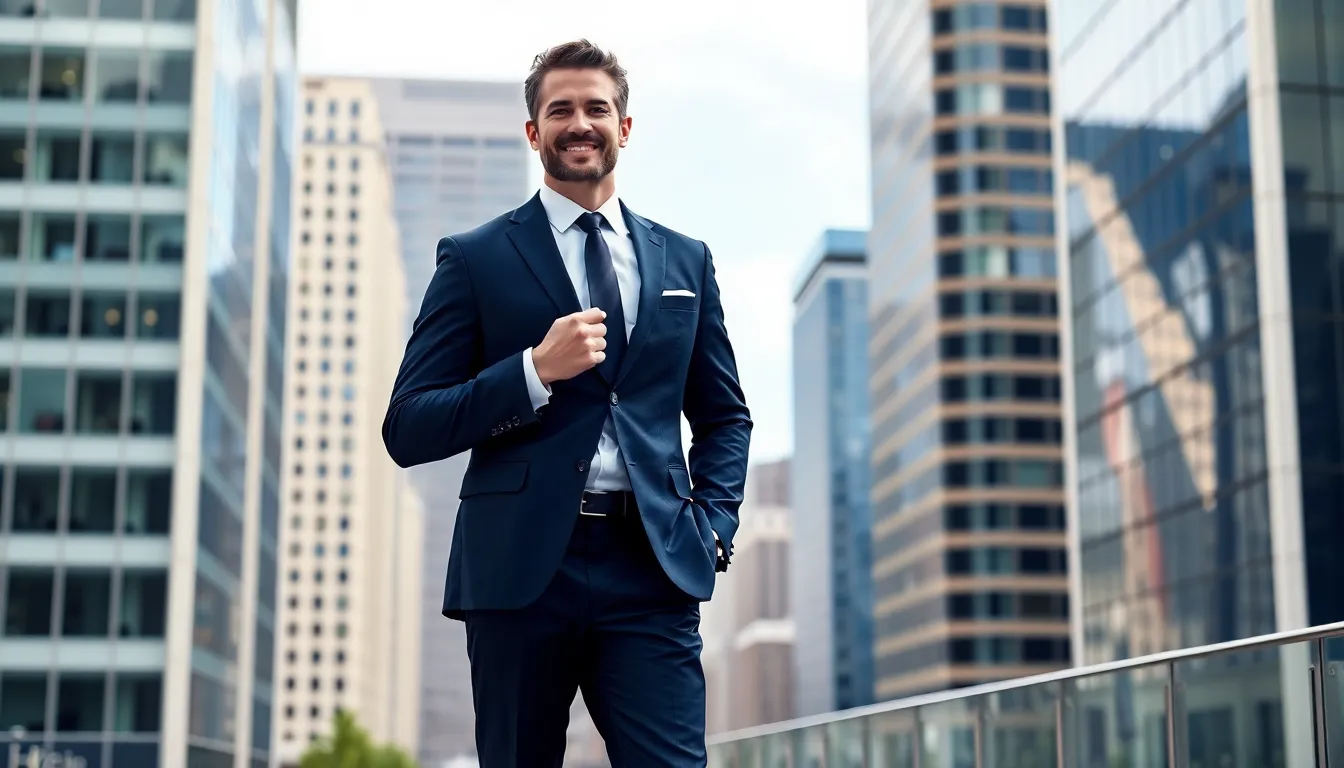
Every man’s formal wardrobe should include several key trouser styles that serve different occasions and preferences. Let’s examine the most important formal pants styles that provide versatility and sophistication for various professional and formal settings.
Traditional Dress Trousers
Traditional dress trousers form the backbone of any sophisticated formal wardrobe. These timeless pants are crafted from fine wool or premium wool blends that offer durability while maintaining an elegant appearance. We recommend focusing on classic colors including black, navy, and charcoal since these versatile shades complement virtually any formal shirt and jacket combination.
Sharp creases down each leg distinguish quality dress trousers from casual alternatives. This pressed line creates a polished and professional silhouette that’s essential for business meetings and formal events. Traditional dress trousers typically feature either flat front or pleated designs, both offering distinct advantages depending on your body type and style preferences.
High quality wool construction provides natural breathability and wrinkle resistance throughout long workdays. These fabrics maintain their shape better than synthetic alternatives while offering superior comfort in various climates.
Pleated vs Flat Front Options
Pleated pants feature distinctive folds at the waistband that create additional room around the hips and thighs. These traditional trousers offer enhanced comfort for men with fuller midsections while evoking a classic, sometimes vintage aesthetic. We find pleated styles particularly effective in formal business environments where traditional styling remains preferred.
Flat front pants present a clean, smooth appearance without any waistband folds. This modern design creates a slimming effect that appeals to contemporary fashion sensibilities. Flat front trousers tend to offer sleeker silhouettes that work exceptionally well for younger professionals and those seeking updated formal styling.
The choice between pleated and flat front designs often depends on body type and personal preference. Pleated options provide more room through the seat and thighs, making them comfortable for active professionals. Conversely, flat front styles complement athletic builds and create streamlined proportions that photograph well in professional settings.
Slim Fit Business Pants
Slim fit trousers represent the perfect balance between formal requirements and contemporary fashion trends. These pants are customized closer to the body than traditional cuts while tapering gradually from thigh to ankle. We’ve observed that slim fit designs particularly complement men with athletic or naturally slender builds.
Modern slim fit pants often incorporate stretch fabrics that maintain comfort while preserving the customized silhouette. This technical innovation allows for natural movement throughout busy workdays without compromising the polished appearance expected in professional environments. Many premium brands now offer four way stretch materials that combine wool with performance fibers.
The contemporary appeal of slim fit business pants makes them ideal for younger professionals entering competitive industries. These trousers project confidence and style awareness while meeting formal dress code requirements. They work exceptionally well with modern shirt cuts and contemporary blazer styles, creating cohesive looks that feel current rather than outdated.
Strategic tapering through the leg creates visual length while maintaining proportional balance. This design technique helps create the impression of height while ensuring the pants don’t appear overly tight or restrictive around key movement areas.
Selecting the Right Fabrics for Different Occasions

Choosing the right fabric makes all the difference in how your formal pants perform throughout the day. We’ll explore three essential fabric categories that form the foundation of any well-rounded formal wardrobe.
Wool Blends for Year-Round Wear
Wool blends dominate the formal pants industry because they deliver unmatched versatility across all seasons. These sophisticated fabrics excel in office environments, formal dinners, and black-tie events where you need to maintain a polished appearance from morning to night.
Refined elegance defines wool blend trousers, with their natural ability to resist wrinkles keeping you looking sharp throughout demanding workdays. Classic shades like navy, black, beige, and charcoal grey provide the perfect canvas for building multiple outfit combinations.
Crease-free properties make wool blends particularly valuable for frequent travelers and busy professionals who can’t constantly worry about pressing their pants. Temperature regulation comes naturally with wool fibers, ensuring comfort whether you’re in air-conditioned boardrooms or outdoor summer events.
Cotton and Linen for Seasonal Styling
Cotton and linen fabrics shine during warmer months when breathability becomes your top priority. These natural fibers work exceptionally well for spring and summer formal events where traditional wool might feel too heavy.
Comfort takes center stage with cotton formal pants, offering a softer feel against the skin while maintaining the structured appearance required for professional settings. Cotton’s versatility allows you to dress up with blazers or dress down with polo shirts depending on the occasion.
Breathability reaches its peak with linen trousers, making them ideal for outdoor weddings, summer business events, and vacation formal wear. Linen’s natural texture adds visual interest while keeping you cool in humid conditions.
Versatile styling options emerge with both cotton and linen, as these fabrics transition seamlessly from casual formal events to more relaxed professional environments.
Performance Fabrics for Modern Professionals
Performance fabrics represent the cutting edge of formal wear technology, specifically designed for active professionals who refuse to compromise style for functionality. These innovative materials combine traditional formal aesthetics with athletic-inspired comfort features.
Stretchable polyester, viscose, and elastane blends create the foundation of modern performance trousers, offering four-way stretch capabilities that move with your body throughout the day. Business travel, long meetings, and active commutes become more comfortable without sacrificing professional appearance.
Mobility and style retention work together in performance fabrics, ensuring your pants maintain their shape and structure even after hours of wear. These materials resist wrinkles, wick moisture, and provide the flexibility needed for today’s ever-changing work environments.
Modern active lifestyles demand formal wear that can keep up with demanding schedules, and performance fabrics deliver exactly that balance between professional requirements and personal comfort.
Coordinating Colors and Patterns Like a Style Expert
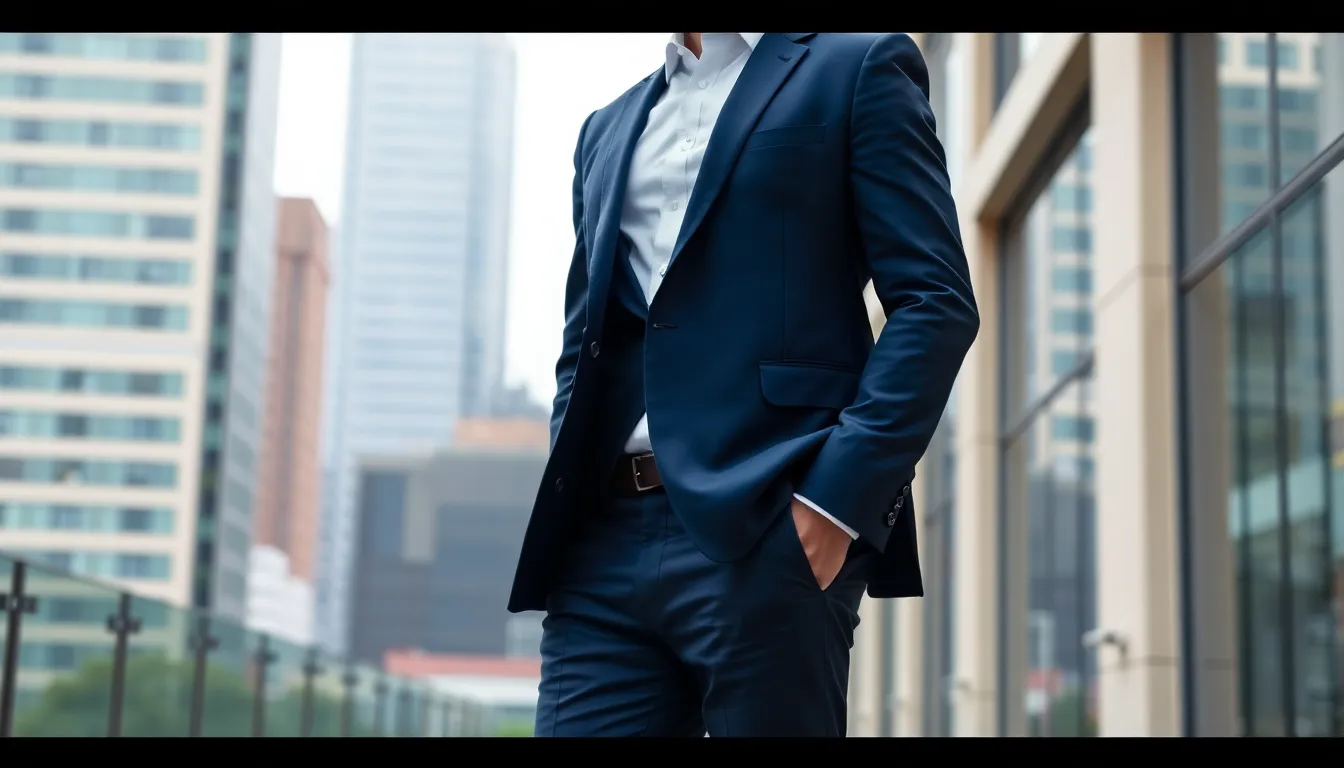
Mastering color coordination elevates your formal pants from ordinary to exceptional. Strategic pattern choices create sophisticated looks that work across multiple occasions.
Navy and Charcoal as Wardrobe Staples
Navy formal pants serve as the foundation of any well-curated wardrobe, offering unmatched versatility for both formal and business casual settings. We recommend investing in high-quality navy trousers because they pair effortlessly with white dress shirts, light blue oxfords, and crisp blazers in complementary tones.
Charcoal grey formal pants provide the perfect alternative to black, creating refined looks without the stark formality. These pants work exceptionally well with burgundy shirts, cream-colored dress shirts, and navy blazers, giving you endless styling possibilities throughout the week.
Both colors transition seamlessly from boardroom presentations to evening events, making them essential investments for the modern professional. Navy and charcoal pants can be paired with a variety of shirts and blazers for different occasions, ensuring maximum versatility in your formal wardrobe.
Pinstripes and Subtle Pattern Integration
Pinstripes add sophisticated texture to formal pants while maintaining professional appeal across various business settings. Fine pinstripe patterns work best when balanced with solid-colored shirts, preventing visual competition between different pattern elements.
Subtle patterns like fine checks create visual interest without overwhelming your overall aesthetic. Herringbone textures enhance your formal pants with understated elegance, particularly effective in wool blend fabrics that drape naturally.
Pattern integration requires careful consideration of scale and contrast to maintain a polished appearance. We suggest limiting patterns to one element of your outfit, allowing pinstripes or checks to become the focal point rather than competing with patterned shirts or ties.
Seasonal Color Considerations
Winter months call for deeper, richer tones that complement the season’s natural palette. Charcoal, navy, and brown formal pants are popular choices for colder months, providing warmth through their darker hues while maintaining professional standards.
Summer styling benefits from lighter shades that reflect heat and create breathable comfort. Beige, light grey, and linen-colored pants are suitable for warmer weather, offering sophisticated alternatives to traditional dark formal wear.
| Season | Recommended Colors | Fabric Considerations |
|---|---|---|
| Winter | Charcoal, Navy, Brown | Wool blends for warmth |
| Summer | Beige, Light Grey, Linen | Breathable cotton blends |
| Spring/Fall | Navy, Medium Grey | Versatile wool-cotton blends |
Seasonal transitions allow for greater experimentation with mid-tone colors like medium grey and olive, bridging the gap between winter’s depth and summer’s lightness. These transitional colors work particularly well in cotton blends and polyester-viscose blends that offer smooth texture and ease of maintenance throughout changing weather conditions.
Pairing Formal Pants with Appropriate Footwear
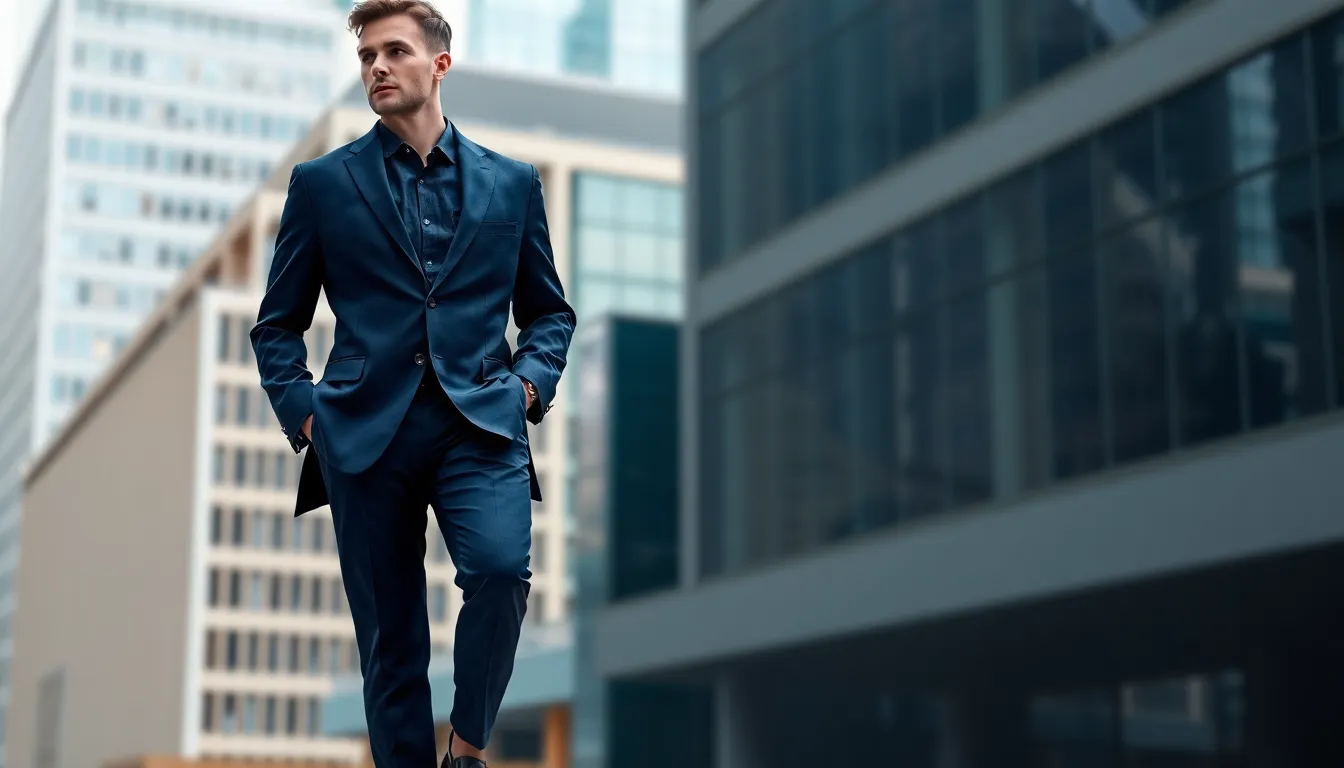
Once you’ve selected the perfect formal pants with proper fit and fabric, the next crucial step involves choosing footwear that complements your carefully curated ensemble. We’ll explore the essential shoe styles that elevate your formal pants from good to exceptional.
Oxford and Derby Shoe Combinations
Oxford shoes represent the pinnacle of formal footwear, featuring a closed lacing system that creates a sleek, streamlined appearance. These classic dress shoes pair exceptionally well with formal trousers in navy, black, or charcoal grey, making them indispensable for formal events and business meetings.
Derby shoes offer a slightly more relaxed alternative with their open lacing system, providing greater comfort while maintaining sophisticated styling. We recommend pairing Derbies with your formal pants when you need versatility that transitions from office meetings to evening social events.
Both Oxford and Derby styles work beautifully with traditional dress trousers, creating a cohesive look that demonstrates attention to detail. The closed lacing of Oxfords makes them more suitable for black tie events, while Derby shoes excel in business formal settings where comfort meets elegance.
Loafer Styling for Business Casual
Loafers bring sophisticated versatility to your formal pants wardrobe, particularly when styling business casual outfits. Slip-on loafers create an effortlessly polished appearance that works seamlessly with less formal versions of dress pants.
Penny loafers add a touch of classic American style to your ensemble while maintaining the refined look your formal pants deserve. These shoes excel when paired with lightweight wool or cotton blend trousers for warmer weather styling.
Tassel loafers provide an elegant option that bridges the gap between casual comfort and formal sophistication. We find these particularly effective when styling formal pants for creative professional environments or weekend social gatherings.
Belt and Shoe Color Coordination
Matching your belt and shoe colors creates a cohesive foundation that enhances your formal pants styling. Black belts and shoes work perfectly with navy or black formal trousers, while brown options complement beige or charcoal grey pants beautifully.
Color temperature coordination ensures your accessories work harmoniously with your formal pants selection. Warm brown tones in both belt and shoes create visual continuity when paired with earth toned trousers, while cool black accessories enhance the crispness of darker formal pants.
Quality leather accessories in matching finishes elevate the overall sophistication of your formal pants ensemble. We recommend investing in both black and brown belt and shoe combinations to maximize the versatility of your formal wardrobe.
Maintaining and Caring for Your Formal Pants Investment
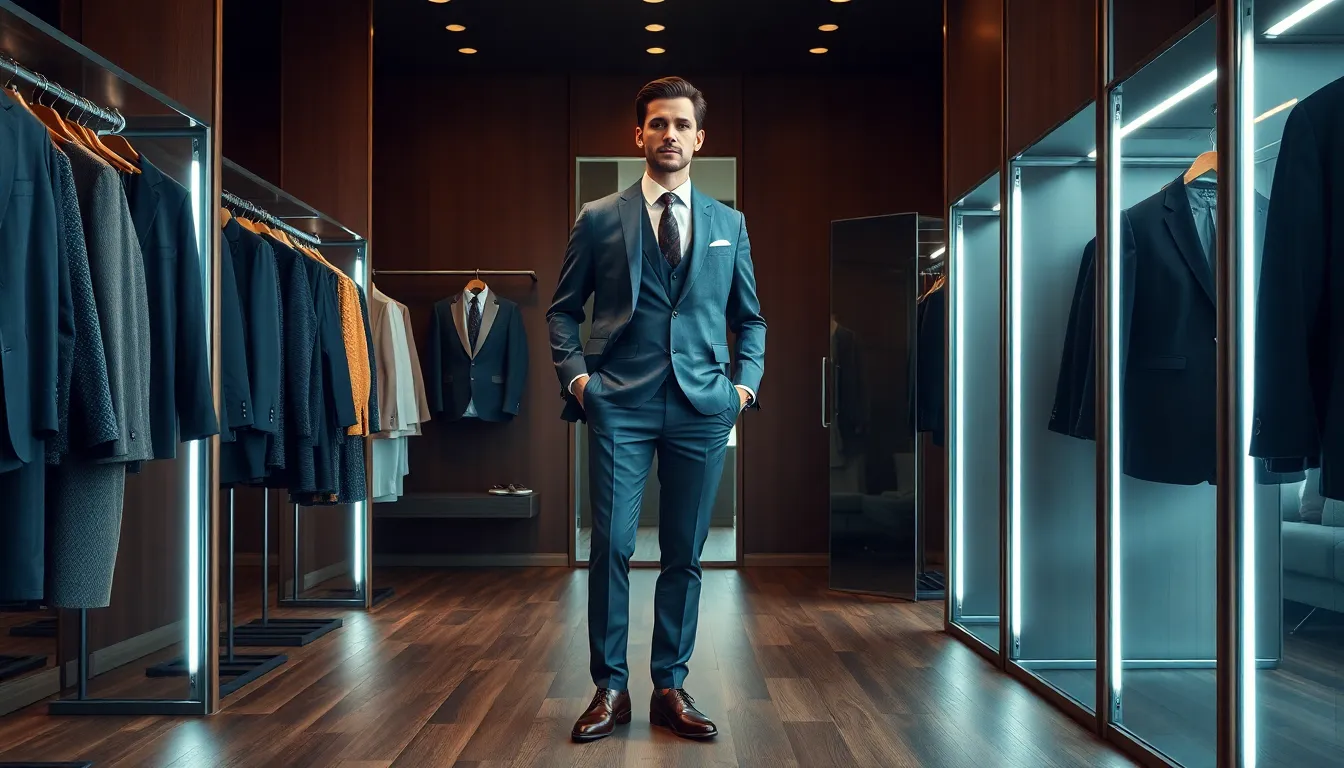
We’ve established that formal pants are a cornerstone investment in your wardrobe. Proper maintenance ensures these quality pieces deliver years of polished performance while preserving their sophisticated appearance.
Proper Cleaning and Pressing Techniques
Dry cleaning remains the gold standard for preserving delicate fabrics in formal pants. Wool and sophisticated blends benefit from professional cleaning that maintains their structure and appearance. Machine washing works effectively for durable cotton blends when you use a gentle cycle and cold water settings.
Steam ironing protects fabric integrity while eliminating wrinkles from your formal pants. Temperature settings should match the fabric type to prevent damage or shine. Pressing along the natural crease lines maintains the trouser’s customized silhouette and professional appearance.
Fabric exact care extends the lifespan of your formal pants significantly. Wool blends require gentle handling and minimal washing frequency. Cotton materials can withstand more frequent cleaning but still benefit from careful temperature control during washing and pressing.
Storage Answers for Longevity
Sturdy padded hangers prevent creasing and fabric stretching in formal pants. Wooden or thick plastic hangers with clips or bars support the trouser weight evenly. Avoid wire hangers that create unwanted pressure points and permanent creases.
Proper folding techniques minimize fabric damage when hanging isn’t possible. Tissue paper placed along fold lines prevents scuffing and maintains the trouser’s smooth surface. Strategic folding at the knee and waist reduces stress on high wear areas.
Cedar blocks and moisture control systems protect stored formal pants from environmental damage. Breathable garment bags shield fabrics from dust while allowing air circulation. Climate controlled storage prevents humidity damage that can affect wool and cotton materials.
When to Seek Professional Tailoring
Professional alterations become necessary when fit issues compromise your appearance in formal pants. Waist adjustments, hem length modifications, and seat alterations require skilled tailoring to maintain the trouser’s original design integrity. Quality tailoring ensures modifications blend seamlessly with the existing construction.
Fabric preservation during alterations requires experienced professionals who understand different material properties. Wool and cotton blends respond differently to alteration techniques. Professional tailors maintain proper proportions while making necessary adjustments to achieve the perfect fit.
Investment protection through expert tailoring extends your formal pants’ functional lifespan considerably. Skilled alterations can transform ill fitting trousers into perfectly customized pieces. Professional services ensure your formal pants maintain their sophisticated appearance and structural integrity throughout the modification process.
Building a Versatile Formal Pants Wardrobe on Any Budget

Creating a comprehensive formal pants collection doesn’t require very costly if you approach it strategically. We’ll guide you through building a foundation that serves multiple occasions while maximizing your investment.
Essential Pieces for Beginners
Navy formal trousers serve as the cornerstone of any beginner’s wardrobe due to their unmatched versatility across business and formal settings. Choose cotton blends or polyester viscose blends for durability and easy maintenance while keeping costs manageable. Black dress pants offer the second essential piece, providing the formal weight needed for evening events and traditional business environments.
Charcoal grey trousers complete the foundational trio by bridging the gap between navy’s versatility and black’s formality. Select these timeless colors first because they pair effortlessly with most shirt colors and create endless styling combinations. Beige or khaki options can follow as your fourth purchase, adding lighter alternatives for warmer months and business casual settings.
Focus on classic straight leg or flat front styles initially since these silhouettes remain consistently appropriate across different occasions. Avoid trendy cuts or unusual details that might limit your styling options or date your wardrobe quickly.
Investment vs Budget-Friendly Options
High quality wool or wool blend trousers represent the best long term investment for formal wear enthusiasts who prioritize longevity and style. These premium fabrics maintain their shape better, resist wrinkles more effectively, and provide superior comfort throughout extended wear. Customized fit options from established menswear brands typically cost more upfront but deliver refined silhouettes that elevate your overall appearance.
Polyester viscose blends offer excellent budget friendly alternatives without sacrificing professional appearance or basic functionality. Look for sales during off season periods when retailers clear inventory of classic styles in standard colors. Department store brands frequently provide quality construction at accessible price points, especially during major shopping events.
Consider purchasing one high quality pair alongside several budget options rather than buying only cheap alternatives. This strategy ensures you have premium pieces for important occasions while maintaining variety for daily wear.
Seasonal Rotation Strategies
Winter formal pants require thicker wool or wool blend fabrics that provide warmth without bulk under customized jackets. Focus on darker colors like navy and charcoal during colder months since these shades complement heavier outerwear and seasonal styling preferences. Flannel weaves and heavier gauge fabrics work particularly well for maintaining comfort in professional heating environments.
Summer weight trousers should feature lighter fabrics and breathable constructions that prevent overheating in warm weather conditions. Choose beige, light grey, or lighter navy shades that reflect heat better than darker alternatives. Cotton blends and tropical weight wools provide excellent warm weather performance while maintaining formal appearance standards.
Spring and autumn transitions call for medium weight fabrics in versatile colors like navy or grey that adapt to changing temperatures throughout the day. Layer these transitional pieces with different shirt weights and jacket options to extend their seasonal utility. Wrinkle resistant blends prove especially valuable during these unpredictable weather periods when you might need to adjust your outfit quickly.
Store off season pieces properly using sturdy hangers and breathable garment bags to maintain their condition between rotations.
Conclusion
Mastering formal pants style transforms your entire professional presence and personal confidence. We’ve covered everything from selecting the perfect fit and fabric to coordinating colors and maintaining your investment pieces.
The key lies in building a strategic wardrobe foundation with versatile staples like navy and charcoal trousers while understanding how proper tailoring elevates even budget-friendly options. Remember that quality fabric choices and appropriate footwear pairings make all the difference.
Your formal pants collection should work as hard as you do. By implementing these style principles and care techniques you’ll create a polished look that serves you well across all professional and formal occasions.
Start with the essentials we’ve outlined then gradually expand your collection as your style confidence grows. Great formal pants aren’t just clothing—they’re tools for success.
Frequently Asked Questions
What are the most important factors to consider when choosing formal pants?
The most important factors are fit, fabric quality, and color. Focus on achieving the right waist measurement and inseam length for your body type. Choose quality fabrics like wool for durability and breathability, or cotton for warmer climates. Stick to versatile colors like navy blue, charcoal gray, and black that coordinate well with various shirts and accessories.
What’s the difference between classic fit and modern fit formal pants?
Classic fit formal pants offer a relaxed, traditional silhouette with more room through the seat and thigh, making them ideal for conservative business settings. Modern fit pants feature a slimmer profile that’s tailored closer to the body, perfect for younger professionals who want a contemporary look while maintaining formal appropriateness.
Which colors are most versatile for formal pants?
Navy blue and charcoal gray are the most versatile colors for formal pants. These neutral tones work well for both business and formal occasions, pair easily with various shirt colors, and can transition from day to evening events. Black formal pants are essential for very formal events like black-tie occasions.
Should I choose pleated or flat front formal pants?
Flat front pants provide a modern, streamlined appearance and create a slimming effect, making them ideal for most body types. Pleated pants offer more room and comfort around the midsection, making them better for fuller figures or those who prefer a traditional, relaxed fit with classic styling.
What fabrics work best for formal pants?
Wool and wool blends are ideal for year-round wear due to their durability, wrinkle resistance, and breathability. Cotton works well for warmer climates and casual formal settings. Performance fabrics with stretch properties are excellent for active professionals who need comfort and mobility while maintaining a polished appearance.
How should formal pants fit around the waist?
Formal pants should fit comfortably around your natural waistline without being too tight or loose. The waistband shouldn’t create bulges or gaps when you sit or stand. You should be able to fit one finger between your waist and the waistband. Consider pants with adjustable waistbands for added comfort.
What’s the proper inseam length for formal pants?
The ideal inseam length creates a slight break where the pants meet your shoes. The hem should just touch the top of your shoe with a small fold or “break.” Avoid pants that are too short (showing ankle) or too long (creating multiple folds), as both can make your outfit look unprofessional.
How do I care for and maintain formal pants?
Dry clean delicate fabrics like wool, while cotton blends can be gently machine washed. Use steam ironing to remove wrinkles and maintain crisp lines. Store pants on sturdy hangers to prevent creasing, or fold them properly if space is limited. Rotate between multiple pairs to extend their lifespan.
What shoes should I wear with formal pants?
Oxford shoes are ideal for the most formal occasions due to their sleek, closed-lacing design. Derby shoes offer a slightly more relaxed but still sophisticated option. For business casual settings, quality loafers like penny or tassel styles work well. Always match your belt color to your shoe color for a cohesive look.
How many pairs of formal pants do I need in my wardrobe?
Start with three essential pairs: navy, charcoal gray, and black formal pants. These colors provide maximum versatility for various occasions. As you build your wardrobe, consider adding different fabrics for seasonal wear and additional colors like dark brown or pinstripe patterns for variety while maintaining professional appropriateness.
